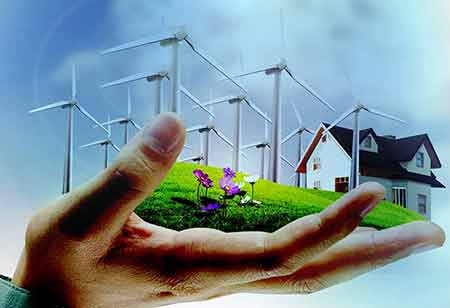Thank you for Subscribing to Energy Business Review Weekly Brief
How Can 3D Printing Power The Making Of Energy Generation Components?
The increasing prices of nickel-based alloys, stainless steel, and titanium alloys coupled directly increase the affordability and accessibility of wind power generation.

By
Energy Business Review | Wednesday, June 15, 2022
Stay ahead of the industry with exclusive feature stories on the top companies, expert insights and the latest news delivered straight to your inbox. Subscribe today.
Hybrid 3D printing technology boosts the manufacturing of wind energy generating components and helps redesign complex parts.
The increasing prices of nickel-based alloys, stainless steel, and titanium alloys coupled directly increase the affordability and accessibility of wind power generation. Hybrid 3D printing highly influences innovative designs and the manufacturing process of wind power generation components.
The latest study states that hybrid 3D printing accelerates component manufacturing time up to 75 percent and decreases the use of material resources by up to 65 percent.
The evolution of hybrid technology is led by the constantly growing demands for high-tech wind-power generation approaches. 3D printing technology offers the manufacturing machine's accuracy and expertise.
Including a 3D scanning system benefits wind power component manufacturers in producing the right part geometrics and fixing the damaged components. Furthermore, hybrid 3D printing gives numerous potential for cost reduction, as the need for manufacturing materials has reduced from the early ways.
Each part of the wind turbine can be enhanced by 3D printing, making it possible to produce complex shapes and contours or reduce the manufacturing time. Such an advantage makes it easy for elaborate components productions. In addition, hybrid 3D printing enables the cost-effective development of aerodynamic design and reduces efforts to generate wind energy.
With the support of the 3D printing process, manufacturers also add specific high-wear materials in thin layers at the exposed areas to high stresses, which boosts the reliability and resistance of that component.
Hybrid 3D printing has a major impact on the wind energy supply chain. Fewer subcomponents optimize the production and reduce the manufacturing cost, avoiding the need for transportation and storage troubles. The availability of components decreases maintenance, operational costs, and downtime in the sector. Several separate parts can be unified with the help of hybrid 3D manufacturing while reducing labor and costs and increasing the machine lifespan.






